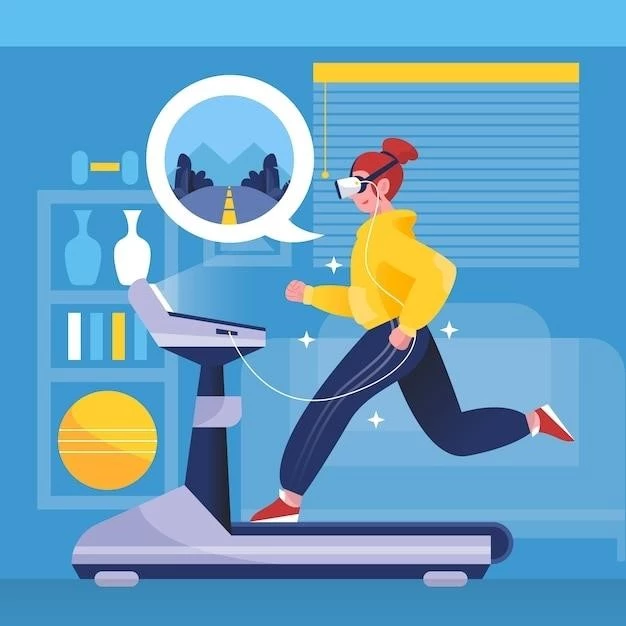Disease ー Exercise Induced Anaphylaxis
Exercise Induced Anaphylaxis⁚ Exercise induced anaphylaxis is a rare condition where physical activity triggers a severe allergic reaction in the immune system. It can lead to symptoms like fainting‚ hives‚ difficulty breathing‚ and swelling‚ potentially progressing to anaphylactic shock‚ an emergency situation.
Overview of Exercise Induced Anaphylaxis
Exercise induced anaphylaxis is a rare but serious condition characterized by a severe allergic reaction triggered by physical activity. The immune system responds abnormally to exercise‚ leading to various symptoms that can range from mild to life-threatening. It is essential to recognize the signs and symptoms of exercise induced anaphylaxis to seek prompt medical attention.
During physical activity‚ the body’s internal temperature rises‚ and this may contribute to the development of an allergic reaction in susceptible individuals. The exact cause of exercise induced anaphylaxis is not fully understood‚ but it is believed to involve a combination of genetic and environmental factors.
Common triggers for exercise induced anaphylaxis include certain foods‚ medications‚ temperature changes‚ and environmental allergens. Individuals with a history of allergies or a family history of anaphylaxis may be at a higher risk of developing this condition. It is crucial for those at risk to take preventive measures and be prepared to manage symptoms if they occur.
Exercise induced anaphylaxis can present with a wide range of symptoms‚ such as skin reactions like hives‚ itching‚ and flushing‚ as well as gastrointestinal symptoms like nausea and abdominal pain. Respiratory symptoms such as wheezing and difficulty breathing can also occur‚ along with cardiovascular symptoms like a rapid or weak pulse‚ low blood pressure‚ and fainting.
In severe cases‚ exercise induced anaphylaxis can progress rapidly to anaphylactic shock‚ a life-threatening emergency that requires immediate intervention. Anaphylactic shock is characterized by a severe drop in blood pressure‚ loss of consciousness‚ and respiratory distress. Timely administration of epinephrine is essential in such emergencies.
It is important for individuals with a history of exercise induced anaphylaxis to work closely with healthcare professionals to develop a personalized management plan. This plan may include identifying triggers‚ carrying medications like antihistamines and epinephrine‚ and knowing when to seek emergency medical assistance. With proper precautions and awareness‚ individuals with exercise induced anaphylaxis can safely engage in physical activity while minimizing the risk of allergic reactions.
Symptoms of Exercise Induced Anaphylaxis
Exercise induced anaphylaxis can manifest in a variety of symptoms that may vary in severity. It is crucial to recognize these signs to take appropriate action promptly. Symptoms can range from mild skin reactions to life-threatening anaphylactic shock‚ so vigilance is key during physical activity.
- Skin Reactions⁚ Hives‚ itching‚ redness‚ swelling‚ and flushing on the skin are common symptoms of exercise induced anaphylaxis. These may appear suddenly during or after exercise.
- Respiratory Symptoms⁚ Individuals may experience wheezing‚ coughing‚ chest tightness‚ shortness of breath‚ or difficulty breathing. These signs should never be ignored during or post-exercise.
- Gastrointestinal Symptoms⁚ Nausea‚ vomiting‚ abdominal pain‚ and diarrhea can occur in some cases. These symptoms may contribute to the overall discomfort during physical activity.
- Cardiovascular Symptoms⁚ Changes in heart rate‚ low blood pressure‚ fainting‚ lightheadedness‚ or dizziness are indicators of a potentially severe allergic reaction. These require immediate attention.
- Anaphylactic Shock⁚ In the most severe cases‚ exercise induced anaphylaxis can lead to anaphylactic shock. Symptoms include a sudden drop in blood pressure‚ loss of consciousness‚ severe respiratory distress‚ and a weak pulse.
It is essential for individuals engaging in exercise to be aware of these symptoms and to listen to their bodies. If any signs of exercise induced anaphylaxis appear‚ it is crucial to stop physical activity immediately and seek medical help. Ignoring symptoms can lead to a rapid progression of the allergic reaction‚ potentially resulting in a life-threatening emergency.
Remember‚ prevention and preparedness are vital in managing exercise induced anaphylaxis. Knowing the symptoms and having a plan in place can make a significant difference in how effectively and quickly the allergic reaction is addressed. Stay informed‚ stay vigilant‚ and prioritize your health and safety during physical activity.
Treatment for Exercise Induced Anaphylaxis
Proper and timely treatment for exercise induced anaphylaxis is crucial to manage the symptoms effectively and prevent a severe allergic reaction from escalating. If you suspect you or someone else is experiencing exercise induced anaphylaxis‚ it is essential to take immediate action to address the allergic reaction.
Steps to Take⁚
- Stop Physical Activity⁚ If symptoms of exercise induced anaphylaxis arise during or after exercise‚ stop all physical activity immediately. Continuing to exercise can exacerbate the allergic reaction.
- Seek Medical Help⁚ Contact emergency services or go to the nearest healthcare facility for prompt evaluation and treatment. Exercise induced anaphylaxis can rapidly progress to a life-threatening situation‚ so timely intervention is crucial.
- Administer Medication⁚ If prescribed by a healthcare professional‚ use antihistamines to help alleviate mild allergic symptoms. In more severe cases‚ the administration of epinephrine via an auto-injector is necessary to counteract the allergic reaction rapidly.
- Monitor Closely⁚ Keep a close eye on the individual’s symptoms and vital signs while waiting for medical help. Be prepared to provide relevant information to healthcare professionals to assist in the diagnosis and treatment process.
Treatment for exercise induced anaphylaxis typically involves addressing the immediate symptoms‚ stabilizing the individual‚ and preventing the allergic reaction from worsening. Healthcare professionals may recommend additional measures based on the severity of the allergic reaction and the individual’s medical history.
It is crucial to follow the guidance of healthcare providers and adhere to any prescribed medications or treatment plans. Additionally‚ individuals with a history of exercise induced anaphylaxis should carry relevant medications‚ such as antihistamines and epinephrine auto-injectors‚ during physical activity to be prepared for any allergic reactions that may occur.
Remember‚ early recognition and appropriate treatment of exercise induced anaphylaxis can significantly improve outcomes and prevent serious complications. Prioritize your health and safety by being proactive in managing any allergic reactions that may arise during exercise.
Prevention of Exercise Induced Anaphylaxis
Preventing exercise induced anaphylaxis involves proactive management strategies to reduce the risk of triggering a severe allergic reaction during physical activity. By taking precautionary measures and understanding your body’s response to exercise‚ you can lower the likelihood of experiencing an allergic episode.
Preventive Measures⁚
- Identify Triggers⁚ Work with your healthcare provider to identify specific triggers that may lead to exercise induced anaphylaxis. Common triggers include certain foods‚ medications‚ environmental allergens‚ and temperature changes.
- Avoid Known Triggers⁚ Once triggers are identified‚ take steps to avoid them before and after physical activity. This may involve dietary restrictions‚ medication adjustments‚ or modifying exercise routines in response to known triggers.
- Gradual Warm-Up⁚ Engage in a gradual warm-up before intense physical activity to help your body acclimate and reduce the risk of an allergic reaction. Start slowly and gradually increase the intensity of your workout.
- Stay Hydrated⁚ Proper hydration is essential during exercise to support your body’s functions and potentially lessen the severity of allergic symptoms. Drink an adequate amount of water before‚ during‚ and after physical activity.
- Carry Medications⁚ If prescribed by your healthcare provider‚ always carry necessary medications like antihistamines and epinephrine auto-injectors during exercise. Ensure these medications are easily accessible in case of an allergic reaction.
- Exercise with a Partner⁚ When possible‚ exercise with a partner or in a group setting. Having someone nearby who is aware of your condition and knows how to assist in case of an emergency can provide an added layer of safety.
- Listen to Your Body⁚ Pay attention to how your body responds during physical activity. If you notice any unusual symptoms‚ such as hives‚ difficulty breathing‚ or dizziness‚ stop exercising immediately and seek medical assistance.
By following these preventive measures and incorporating them into your exercise routine‚ you can better manage the risk of exercise induced anaphylaxis and enjoy physical activity with greater peace of mind. Consult with your healthcare provider for personalized guidance on preventing allergic reactions during exercise.
Remember‚ prevention is key in safeguarding your well-being while engaging in physical activities. Stay proactive‚ informed‚ and attentive to your body’s signals to minimize the chances of experiencing exercise induced anaphylaxis. Your health and safety are paramount.
Role of Healthcare Professionals
Healthcare professionals play a crucial role in the identification‚ management‚ and prevention of exercise induced anaphylaxis. By collaborating with your healthcare team‚ you can receive the necessary guidance and support to navigate this condition and engage in physical activity safely.
How Healthcare Professionals Assist⁚
- Diagnosis⁚ Healthcare professionals help in diagnosing exercise induced anaphylaxis through a comprehensive evaluation of your medical history‚ symptoms‚ and potential triggers. Proper diagnosis is essential for developing an effective management plan.
- Personalized Management Plan⁚ Working with your healthcare provider‚ you can create a personalized management plan that includes identifying triggers‚ outlining emergency protocols‚ and determining appropriate medications to carry during physical activity.
- Medication Guidance⁚ Healthcare professionals prescribe medications such as antihistamines and epinephrine auto-injectors based on your individual needs. They provide instructions on when and how to use these medications in case of an allergic reaction.
- Advice on Prevention⁚ Healthcare professionals offer valuable advice on preventive measures to minimize the risk of exercise induced anaphylaxis. They may recommend specific warm-up routines‚ dietary modifications‚ hydration strategies‚ and exercise precautions.
- Educational Resources⁚ Your healthcare team can provide educational resources and information about exercise induced anaphylaxis‚ its symptoms‚ triggers‚ and emergency response. Understanding the condition empowers you to manage it effectively.
- Ongoing Support⁚ Healthcare professionals offer ongoing support and monitoring to ensure that your management plan is effective and adjusted as needed. Regular follow-up appointments allow for the review of your condition and any changes in symptoms.
- Emergency Preparedness⁚ Healthcare providers educate you on recognizing the signs of a severe allergic reaction and the steps to take in an emergency. They equip you with the knowledge and tools to respond promptly to anaphylactic episodes.
Collaborating closely with healthcare professionals is essential for individuals with exercise induced anaphylaxis to maintain their health and well-being while engaging in physical activities. Your healthcare team is there to support you‚ provide expert guidance‚ and ensure you are prepared to manage any allergic reactions effectively.
Remember‚ open communication with your healthcare provider‚ adherence to treatment plans‚ and regular monitoring are key components of managing exercise induced anaphylaxis. Trust in the expertise of your healthcare team‚ and work together to prioritize your safety and enjoyment of physical activity.

